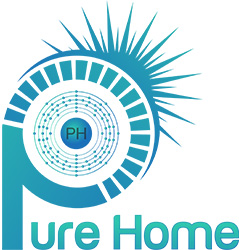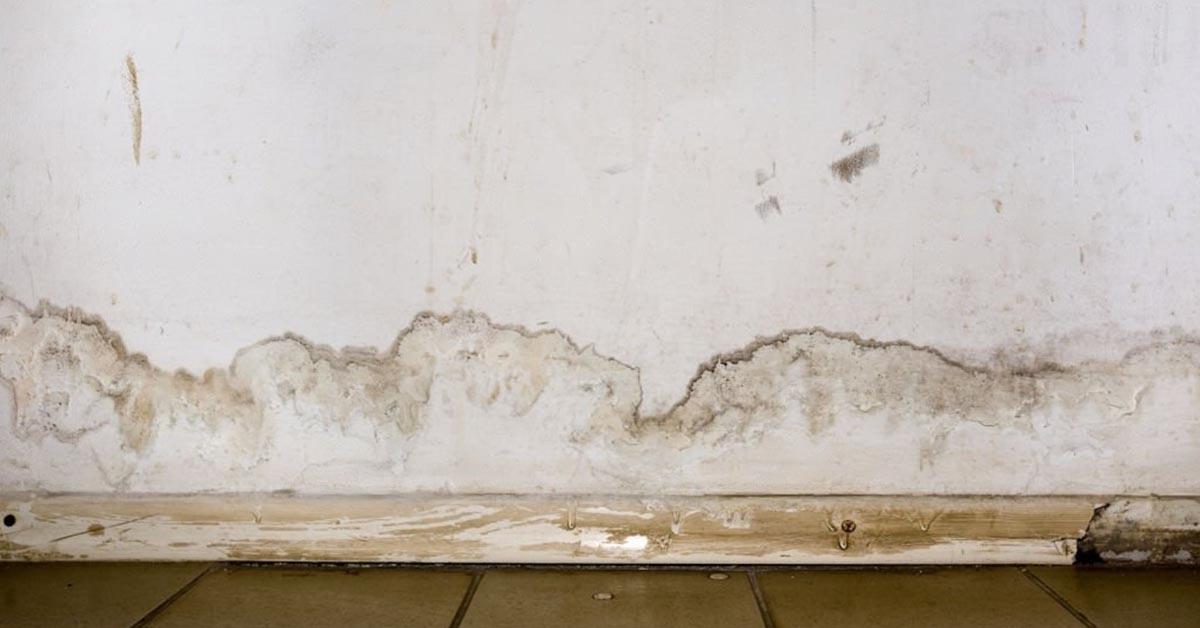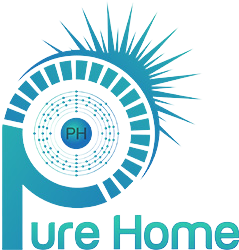What Is The Difference Between Mold Remediation and Mold Removal?
Mold can be a problem for homeowners, leading to health concerns and increasing the risk of allergies and other illnesses. Mold can grow in damp environments and may be difficult to eradicate, that can often make the strategize which way is best for removal.
In general there are two ways to eliminate mold and which “word” we use to define is often determined by how bad the mold growth has become. That’s the key to understanding the difference between mold remediation and mold removal.
Mold remediation is a process designed to remove active mold growth from surfaces as well as prevent potential mold regrowth. It involves identifying potential areas where mold could be hiding, determining if there is existing growth, containing the affected area or materials, and removing contamination which includes any absorbent materials or structural components that cannot be fully restored or cleaned. Remediation will usually involve removing the actual materials.
Mold removal focuses solely on physically getting rid of active visible growth, typically by cleaning off surfaces with specialized cleaning agents. The mold removal process sometimes does not address potential areas spores may have become trapped or any underlying issues like moisture that has allowed for active growth in the first place. It may also not take into account the possibility of regrowth in similar conditions down the road if environmental controls are not in place.
What is Mold Remediation?

Mold remediation is the process of eliminating and preventing the growth of mold in an indoor environment. It involves identifying sources of moisture infiltration and eliminating excess moisture, as well as removing visible signs of mold growth. In short, mold remediation is the complete solution. Fixing the source of mold, removing all the contaminated areas, replacing the materials and insuring that mold cannot come back.
Steps in Mold Remediation
Mold remediation is the process of eliminating or managing mold from an environment, be it residential, commercial or industrial. Remediation is the process of identifying the source(s) of mold, containing the area and any mold-contaminated materials, removing materials that have been contaminated by mold and/or cleaning unaffected materials to prevent future contamination. The main differences between mold remediation and removal are that with remediation, the goal is to get rid of all visible or hidden signs of existing mold, prevent future growth and treat any resulting health issues associated with exposure to the affected area.
Remediation can involve a few steps such as:
- Assessment – Proper assessment helps identify sources of moisture in order to control moisture levels and deter further infestation.
- Containment – This step keeps contaminated particles within a limited space while protection equipment (respirators) are being used.
- Air Filtration – High quality air filtration machines remove airborne particles, helping reduce potential risks on exposure via inhalation.
- Removing Contaminated Materials – Depending on the severity project requires removing all porous material including drywall, fabrics and carpeting which have become infested with mold spores. Once removed these items should be properly disposed for safety reasons.
- Cleaning Unaffected Areas – Vacuuming with a HEPA filter helps capture any remaining spores which could then spread through your home; scrubbing surfaces will also help sanitize unaffected areas from possible contaminations due to contact with infected materials during containment process.
- – Replacement – After sanitizing effected area replacement may also be recommended depending on severity; fresher material will help eliminate persistent odors caused by bacteria growth and reduce chances for reoccurrence of contamination.
What is Mold Removal?

Mold removal is the process of removing mold from a home or other indoor space. It involves both physical removal of the mold, as well as disinfection and cleaning of the area to prevent mold from returning. Mold removal is a necessary step for some homeowners, as mold can cause health risks and further damage to a home’s structure.
Steps in Mold Removal
Mold removers can provide homeowners with a variety of services to help mitigate mold problems. While mold remediation refers to large-scale contributions that include restoration of areas and items contaminated by mold, mold removal includes specific steps to deal with the source of the problem. If you suspect there is a mold problem in your home, it is important to have it addressed as soon as possible.
The following steps should typically be included when dealing with a mold problem:
- Identifying the source of the moisture: This is one of the most important steps in detecting and managing mold growth. Inaccessible areas such as walls are generally inspected with infrared technology to determine potential sources of hidden moisture that could cause or contribute to indoor air quality concerns.
- Isolating affected areas: Areas where physical contact with evidence of microbial growth can be isolated using polyethylene plastic sheeting and other barrier systems so that uncontaminated areas remain unaffected while work is performed on affected locations.
- Removal: During this step, appropriate methods are used by professional removers for proper cleaning and removal of all traces or evidence on non-porous surfaces such as tile and concrete slabs, hardwood floors, fixtures, countertops and walls — safety protocols should always be followed when doing this kind of work! Once gone, further testing (air sampling) might take place prior to closure of the recently isolated area–this will determine if any living microorganisms are present and still require remediation activities in that location.
- Disposal: All material removed from contaminated areas must be bagged for immediate disposal at an approved facility–not just put into regular trash bins! Specialty firms like Biohazard Restoration Inc., employ qualified crews to safely remove hazardous debris without risk posed by more traditional methods like simply dumping materials onto landscaping or vegetation outside residence/businesses which puts people who might come into contact with these spores at additional risk!.
Difference between Mold Remediation and Mold Removal
Mold remediation and mold removal are two terms often used interchangeably, however, it is important to note that they are not one and the same. The process of removing mold from a home or business is known as mold removal, while mold remediation is the process of restoring the air quality of a home or business to a safe and healthy level. This article will provide an in-depth look at the differences between the two processes and what to keep in mind when dealing with mold.
Type of Mold
Mold grows in damp areas, so it’s important to inspect the area regularly and take prompt action if any signs of mold are present. There are different types of molds but they are typically divided into two categories – dry and wet.
Dry-rot molds are found on dry surfaces and cause damage to wood, paper and untreated fabrics due to their large appetite for cellulose materials. Dry rot molds have deep roots that spread through wood destroying its structural integrity along with causing extensive decay.
Wet-rot molds are found on damp areas and prefer warm temperatures (over 70F). Wet-rot molds can damage wood, paper, fabrics but also concrete, mortar joints in walls or floors – causing wear or discoloration on surfaces that can be difficult to clean or remove.
Remediation may involve cleaning up the existing surface area with chemical cleansers or by wiping down with a regime cleaning process until all of the visible levels are reached. After thorough cleaning has been performed any additional moisture must be removed which would involve using fans/dehumidifiers within the affected area until conditions improve back to standards oftentimes outlined by governing municipality/local funding agencies.
Once an inspection is completed then removal may begin which entails locating & identifying the source (most times this is a HVAC component), salvaging items that could still be salvaged since they were removed early enough & sealed tightly prior to being moved out of containment spaces in order to minimize chance of future growth
In conclusion when faced with a potential issue it’s important to know whether you need remediation or removal services done in order to suit your specific needs accordingly as each situation can depend greatly depending upon severity level present in different scenarios .
Cost
The cost associated with mold remediation and removal can vary greatly, depending on the size of the infected area, types of materials affected, the amount of mold present, and access to professional equipment and expertise.
Mold remediation involves removing or cleaning all visible surfaces with a specialized solution. The process may also require replacing or repairing heavily damaged or porous materials, such as drywall or insulation. Depending on the extent of the damage, potential costs could range from hundreds to thousands of dollars.
Mold removal focuses on removing visible mold patches without assessing any underlying problems such as water infiltration that can cause more serious infections if left unaddressed. Depending on the number and extent of affected areas, removal costs may be similar to those associated with remediation given that both processes use similar solutions while adding additional time to locate and assess potential sources of water infiltration.
Level of Invasiveness
The difference between mold remediation and mold removal is the level of invasiveness.
Mold remediation seeks to address the containment, cleaning and removal of the existing mold in order to reduce future growth. It can involve cutting into walls and floors or require extensive cleanup or extensive material replacement.
On the other hand, mold removal is a more intensive procedure that requires significant time and effort to remove all mold from a structure’s air system. With removal, the entire property must be sealed off while special HEPA vacuums are used to clean hard-to-reach areas such as underneath floorboards, ceilings, crawlspaces and basements.
The goal of mold removal is total eradication of all existing colonies from an area; this may require long-term monitoring after the completion of treatment in order to ensure that no new colonies form.
Conclusions about What Is The Difference Between Mold Remediation and Mold Removal?
Mold remediation focuses on preventing contamination from spreading in your home, while mold removal is the process of eliminating mold colonies in your home. Remediation involves identifying, evaluating and correcting moisture sources along with cleaning and removal of contaminated materials. Removal involves actual physical removal of the active mold colonies.
Remediation is a much more comprehensive approach to mold control than just the physical removal of affected materials. In cases where water has caused widespread damage or extreme levels of contamination, total mold remediation may be necessary to protect the health and safety of those living in the structure.
In conclusion, it is important to understand that both Mold Remediation and Mold Removal play a role in the safe handling or containment of mold on your property. It is recommended that you contact a professional remediation company before attempting any kind of clean-up or removal yourself so that they can ensure that all measures are taken correctly and safely. Doing this will help ensure that no further damage occurs as a result of unqualified work being done on your property.



